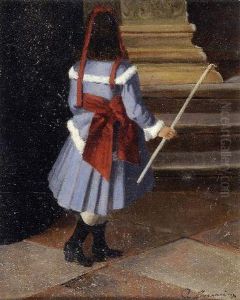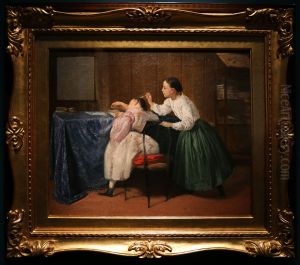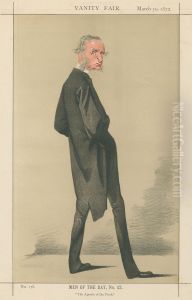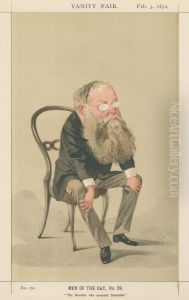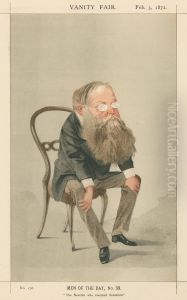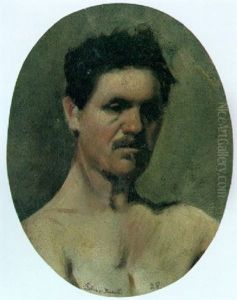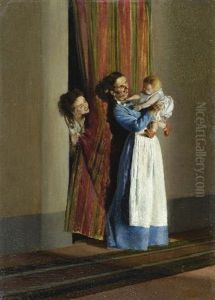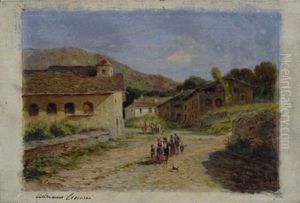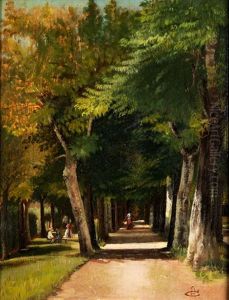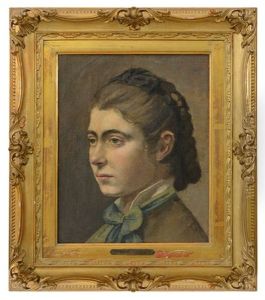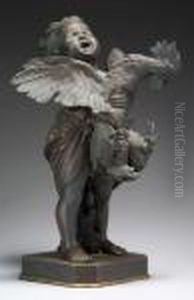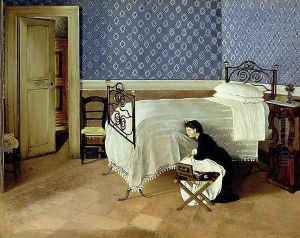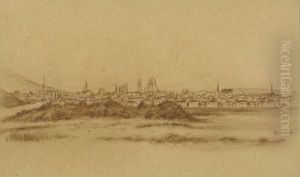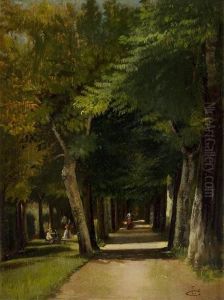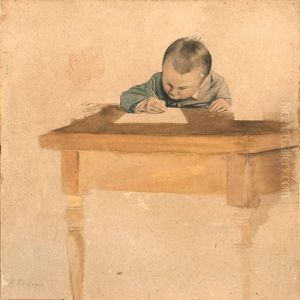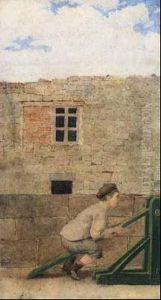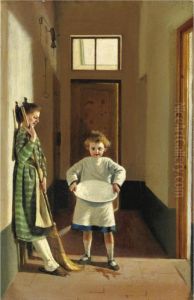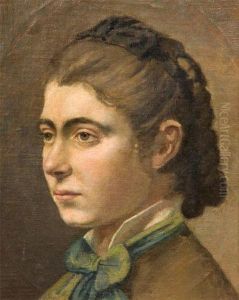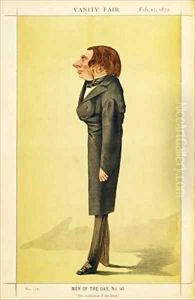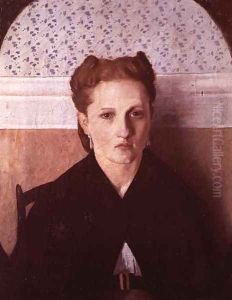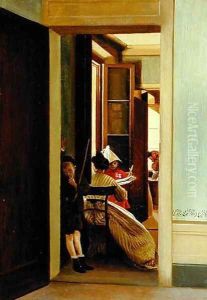Adriano Cecioni Paintings
Adriano Cecioni was born on July 26, 1836, in Florence, Italy, and emerged as a significant figure in the 19th-century Italian art world. Initially trained in engineering, Cecioni's passion for art led him to abandon his technical studies in favor of painting, sculpture, and criticism. He became a prominent member of the Macchiaioli group, a movement that predated and influenced the development of Impressionism in Italy. The Macchiaioli, like the Impressionists, were interested in capturing the effects of light and color in the landscape and everyday life, but they approached these themes with a distinctly Italian sensibility.
Cecioni's artistic output includes a variety of subjects, from genre scenes and portraits to landscapes. He was particularly adept at capturing the nuances of human expressions and the dynamics of social interactions, often with a subtle critique of contemporary society. His work is characterized by its realistic detail, nuanced use of color, and the dynamic composition of figures within domestic and urban settings.
Beyond his contributions as an artist, Cecioni was also an influential art critic and writer. He penned numerous essays and articles discussing art theory, critiques of the art establishment, and the role of modern art in society. His writings helped to articulate the principles of the Macchiaioli movement and defended the group's innovative approach against conservative criticism.
Cecioni's career was marked by his engagement with the artistic community in Florence and his commitment to the advancement of modern art in Italy. Despite facing financial difficulties and health problems in his later years, he continued to produce work that reflected his deep observation of life and society. Adriano Cecioni died on May 23, 1886, in Florence. His legacy is preserved in the collections of major Italian museums and in the continued study of the Macchiaioli movement and its impact on the trajectory of Western art.
